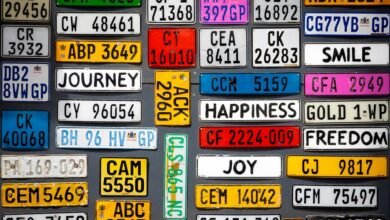State Number: the Meaning of State Car Numbers

State car numbers, or license plates, represent more than just vehicle identification. They encapsulate a state's identity, showcasing local history and culture through unique designs. Each plate serves practical purposes while also reflecting personal expression and regional pride. This duality raises questions about their significance in modern society. What deeper meanings lie within these seemingly simple identifiers? Exploring these facets reveals a rich tapestry of mobility and individuality that warrants further examination.
The History and Evolution of State Car Numbers
As the automobile gained popularity in the early 20th century, states across the U.S. began to implement registration systems, marking the inception of state car numbers.
The history timeline reveals a fascinating evolution, showcasing design variations that reflect regional identities and automotive trends.
These changes not only symbolize individual freedom but also highlight the growing importance of vehicle identification in an increasingly mobile society.
Decoding the Components of State Car Numbers
Understanding the components of state car numbers reveals a structured system designed to convey vital information about each vehicle.
License plate formats vary significantly across regions, often incorporating letters and numbers that indicate the vehicle's origin, type, and registration status.
These regional variations reflect local regulations and cultural preferences, ultimately serving both practical purposes and facilitating individual expression through personalized plates.
The Cultural Significance of License Plates in Different States
License plates serve as more than mere identification tools; they reflect the cultural identities and values of the states they represent.
Each state's license plate symbolism often incorporates regional designs that celebrate local history, nature, or landmarks. This unique representation fosters a sense of pride among residents, allowing them to express their individuality and connection to their state's heritage while embracing their quest for freedom.
Conclusion
In conclusion, state car numbers are not merely tools for identification; they are reflections of history, symbols of identity, and expressions of individuality. They connect communities to their heritage, showcase regional pride, and facilitate the freedom of movement. As these plates evolve, they continue to tell stories, evoke emotions, and foster connections among residents. Understanding the significance of state car numbers enhances appreciation for the intricate relationship between culture, identity, and mobility in our lives.





